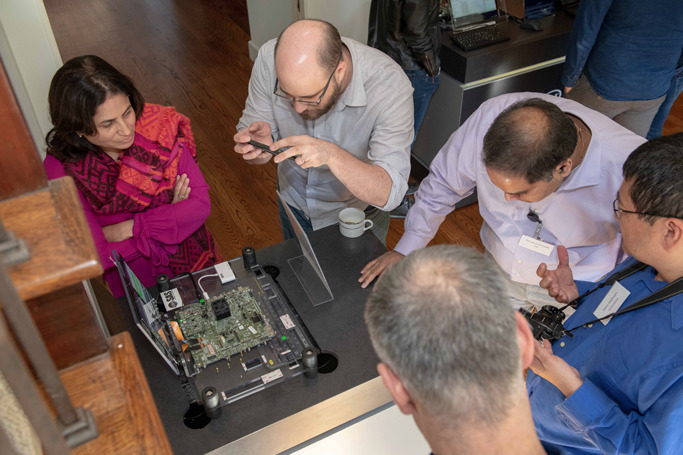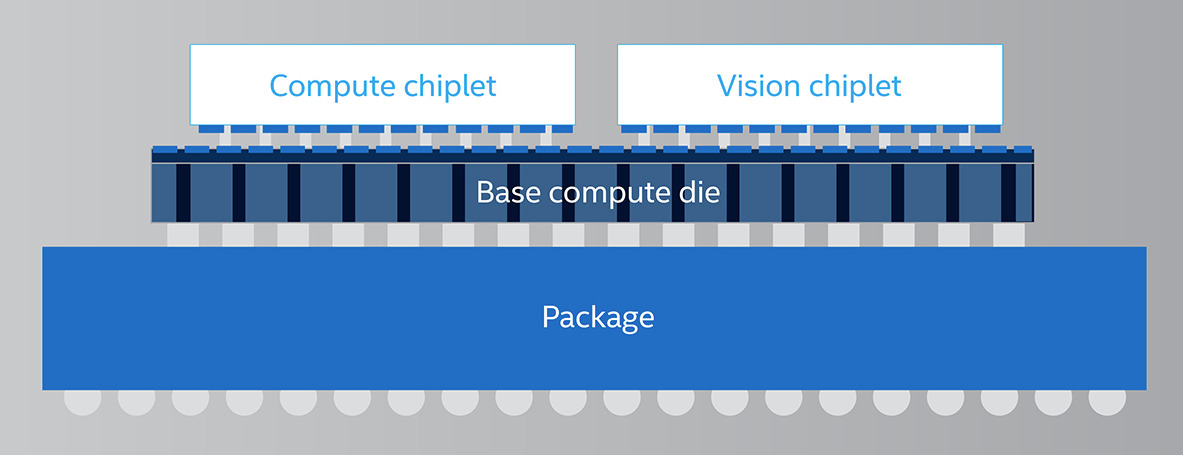Intel details 'Sunny Cove' processors suitable for 2019 Mac Pro, iMac Pro refresh in 2019
Intel has revealed some of the innovations it will be putting to use in its upcoming processors, with the introduction of higher-performance Sunny Cove microarchitecture and 3D die stacking for processors potentially making their way into future Mac devices, with arrival more likely in Xeon-equipped iMac Pro and Mac Pro lines first.
Intel's Architecture Day on Tuesday offered a glimpse into the chip producer's plans for the coming years regarding its processor ranges. While the company didn't go into detail about specific processors it would produce, it did explain the kinds of technologies it will be employing in its future designs, improving the performance and other elements of the processors.
Among the topics brought up by Intel that could impact processors for use in MacBooks, iMacs, and the Mac Pro are the introduction of a new CPU microarchitecture dubbed "Sunny Cove," Gen11 integrated graphics, and the use of 3D Stacking of Logic Chips.
Sunny Cove
While current-generation chips up to and including Coffee Lake have used variations of the Skylake core since 2015, Intel intends to bring out a replacement sometime in 2019. Produced on a 10-nanometer process, the architecture aims to increase the performance per clock and power efficiency for general computing tasks, while at the same time adding features to accelerate specialized tasks, such as AI and cryptography.
Sunny Cove will be enhanced to execute more operations in parallel, with new algorithms to reduce latency, and increased key buffer and cache sizes to optimize data-heavy workloads. Architectural extensions for specific types of task will be incorporated, such as for boosting performance in cryptography via vector AES and SHA-NI, or for data compression and decompression.
Becoming the basis of Intel's next-generation Xeon processors at first, Sunny Cove will also be used for its client and consumer-aimed Core processors later in the year.
A roadmap for future core releases also revealed Intel's intentions beyond Sunny Cove. "Willow Cove" in 2020 will feature a redesigned cache, a new transistor optimization, and more security features. "Golden Cove," tipped to arrive in 2021, brings with it a focus on AI and single-threaded performance, network and 5G communications improvements, and more security.
Gen11 graphics
The integrated graphics in Sunny Cove-based processors are also expected to be a step up on current versions. Gen11 will offer 64 enhanced execution units, more than double the number offered in the previous Gen9 release, with Intel claiming it is also designed to break the 1-teraflop barrier.
For reference, Gen10 failed to release, as it was intended for Coffee Lake processors but ultimately didn't materialize. Evidently Intel decided moving to Gen11 was the best option.
At the event, Intel demonstrated Gen11's improvements by showing it as close to doubling the performance of a "popular photo recognition application" compared to Gen9. The graphics architecture is expected to double the current computing performance-per clock offered by Gen9 on modern processors.
Gen11 will also include an advanced media encoder and decoder that supports 4K video streams and creating 8K-resolution content, even under constrained power requirements. Intel Adaptive Sync will also make an appearance for smooth frame rates while gaming.
Intel also took the opportunity to reaffirm its plan to provide a discrete graphics processor by 2020, but did not elaborate further.
3D Stacking
While not immediately consumer-focused, the addition of 3D Stacking of Logic Chips is touted as an industry first. Named "Foveros," the technology brings the technique from memory to logic chips for the first time, enabling logic-on-logic integration between layers.
Foveros can allow for a "mix-and-match" approach to chip design, with IP blocks of memory and I/O elements able to be broken up into smaller "chiplets," and then stacked into a single chip, connected together between layers. This can simplify chip production to offer a wider range of processor options, including chips optimized for specific use cases.
The first Foveros-based products are expected to arrive in the second half of 2019, with the first thought to combine a 10-nanometer compute-stacked chiplet with a low-power 22FFL base die, putting a high-performance processor into a small form factor.
If successful, the system could be a major advantage for device producers, as packing the processor into a smaller space frees up area for other components to be used by device vendors. For example, a smaller processor could help shrink a motherboard, in turn allowing for smaller or thinner devices, or to maintain the size and mass but add more battery capacity.
What to expect
While the technologies on show are not arriving anytime soon, it does give some suggestions as to what to expect over the next year regarding processor releases. As a preview that didn't detail specific processors, Intel has the opportunity to push everything back if it needs to, as it has previously done before, so the 2019 release estimates should be taken as general guidelines.
The Xeon-first approach is a likely candidate for the forthcoming Mac Pro, or an iMac Pro update. As the technologies move down the line, as with most Intel Core processors, there is always a chance for them to be included in future Mac products, depending on their thermal design points and ultimate utility. Again, such inclusions are far into the future, and rely on Apple deciding to make the jump to using the newer architectures in a timely fashion when they finally arrive.
Apple's shift to newer architectures in its products is to be expected, but the main motivation for when it does so depends entirely on when other devices are released and Intel's ability to deliver at the times it claims.
 Malcolm Owen
Malcolm Owen












 Mike Wuerthele
Mike Wuerthele

 Chip Loder
Chip Loder

 William Gallagher
William Gallagher
 Christine McKee
Christine McKee
 Michael Stroup
Michael Stroup
 William Gallagher and Mike Wuerthele
William Gallagher and Mike Wuerthele






